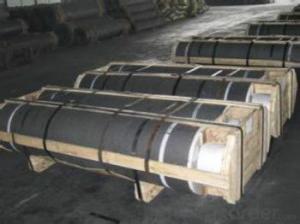When we talk about the raw materials in graphite electrode manufacturing, we’re diving into a world of fascinating chemistry and physics. It’s a world where carbon atoms dance together to create something strong, durable, and versatile. Let’s explore this world together, shall we?
First off, let’s get to know the main player in our story – graphite. Graphite is a form of carbon, just like diamond, but with a different structure. While diamond is all about hardness and sparkle, graphite is all about flexibility and conductivity. It’s the go-to material for making electrodes because of its ability to conduct electricity and heat, and its resistance to heat.
Now, where does graphite come from? It’s not just found lying around waiting to be picked up. It’s mined from the earth, just like any other mineral. The process of mining graphite is an adventure in itself, involving digging, crushing, and sorting. Once the graphite is extracted, it’s time for the refining process. This is where the raw material is cleaned, purified, and prepared for the next stage of its journey.
Next, we have to talk about the binder. The binder is like the glue that holds everything together. In graphite electrode manufacturing, pitch is commonly used as a binder. Pitch is a byproduct of the petroleum industry, and it’s sticky, dark, and has a high carbon content. It’s perfect for binding the graphite particles together to form a strong and stable structure.
But wait, there’s more! The manufacturing process also involves the addition of other materials to enhance the properties of the electrodes. These can include things like coke, which is a form of carbon derived from coal, and coal tar, another byproduct of the petroleum industry. These materials are added to improve the strength, density, and electrical conductivity of the electrodes.
The process of making a graphite electrode is like a well-orchestrated dance. It starts with mixing the graphite, binder, and other materials together. This mixture is then heated and pressed into shape. The resulting product is a preform, which is a precursor to the final electrode. The preform is then baked at high temperatures to remove any remaining impurities and to further strengthen the structure.
Finally, the electrode is machined and shaped to the exact specifications required for its intended use. This can involve cutting, grinding, and polishing to achieve the perfect finish. The end result is a graphite electrode that is ready to do its job, whether that’s in an electric arc furnace, a ladle furnace, or any other application where high temperatures and electrical conductivity are needed.
In this journey through the world of graphite electrode manufacturing, we’ve seen how raw materials are transformed into something truly useful and powerful. It’s a process that requires precision, skill, and a deep understanding of the properties of the materials involved. So next time you see a graphite electrode, remember the story behind it, the journey it took to become what it is today.

